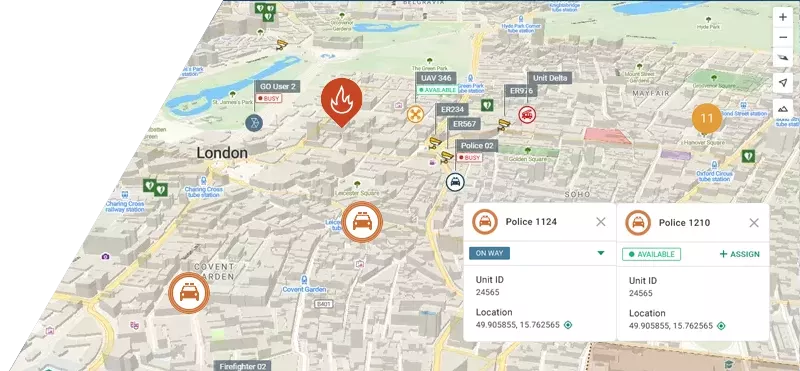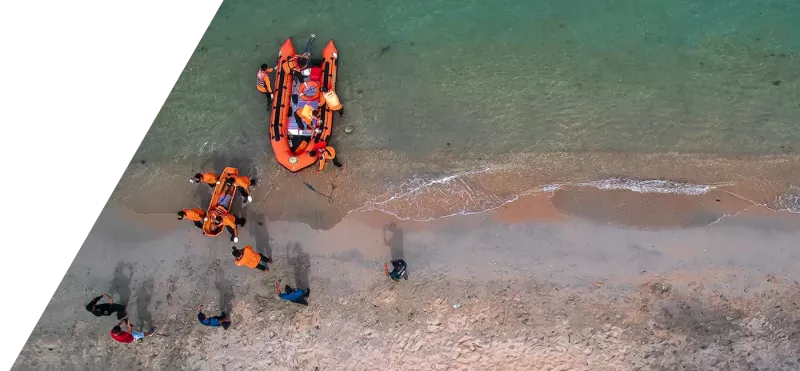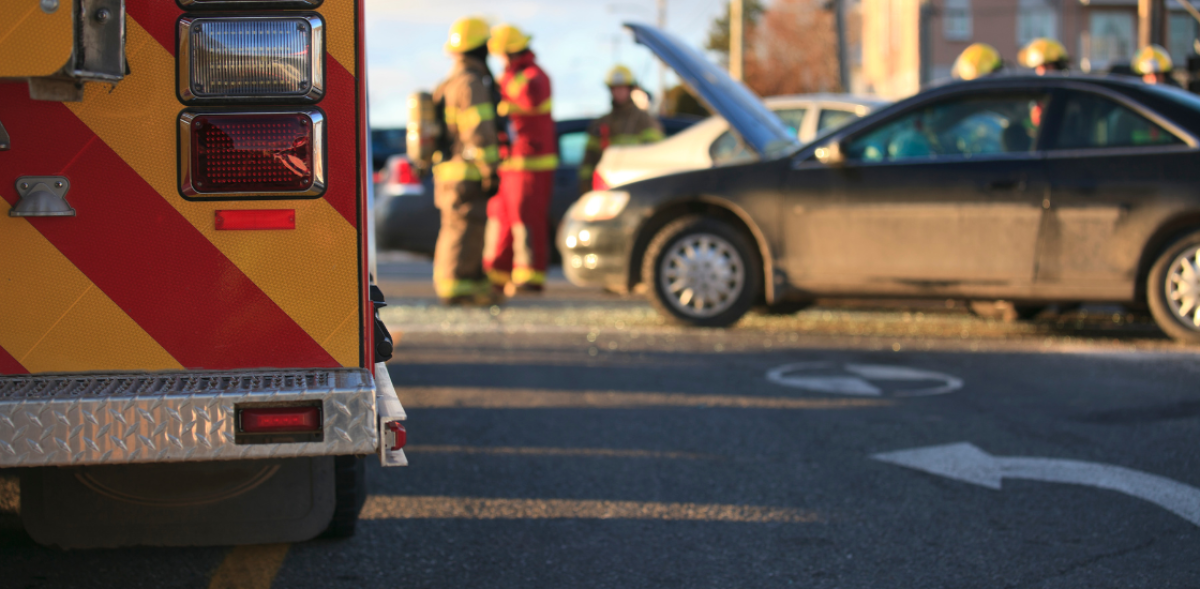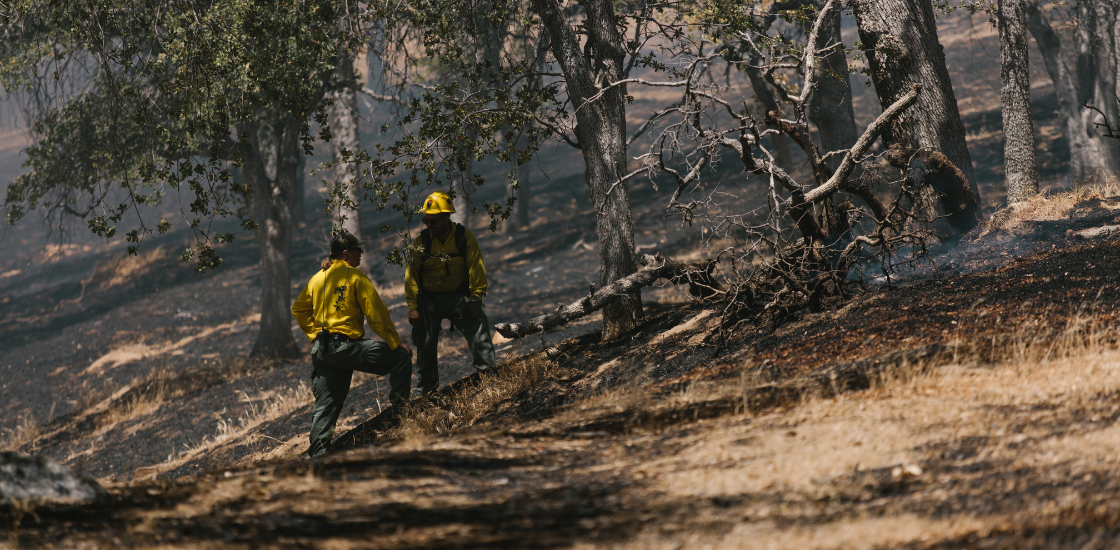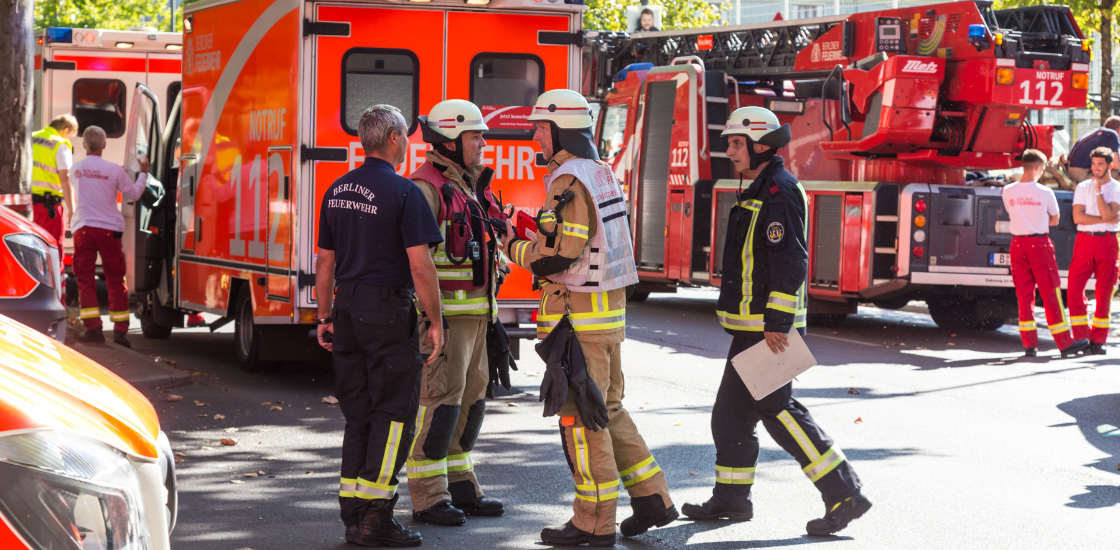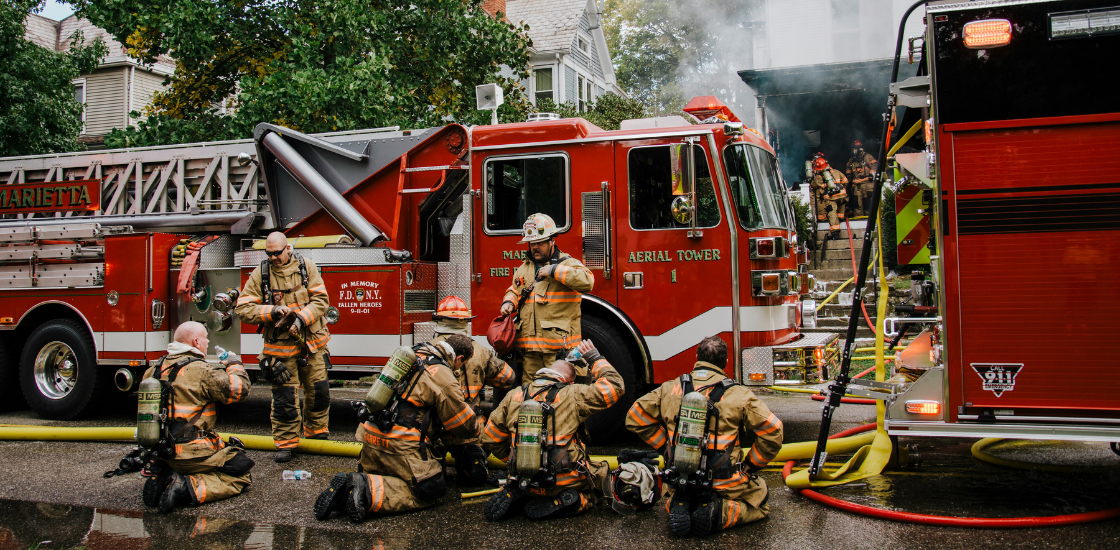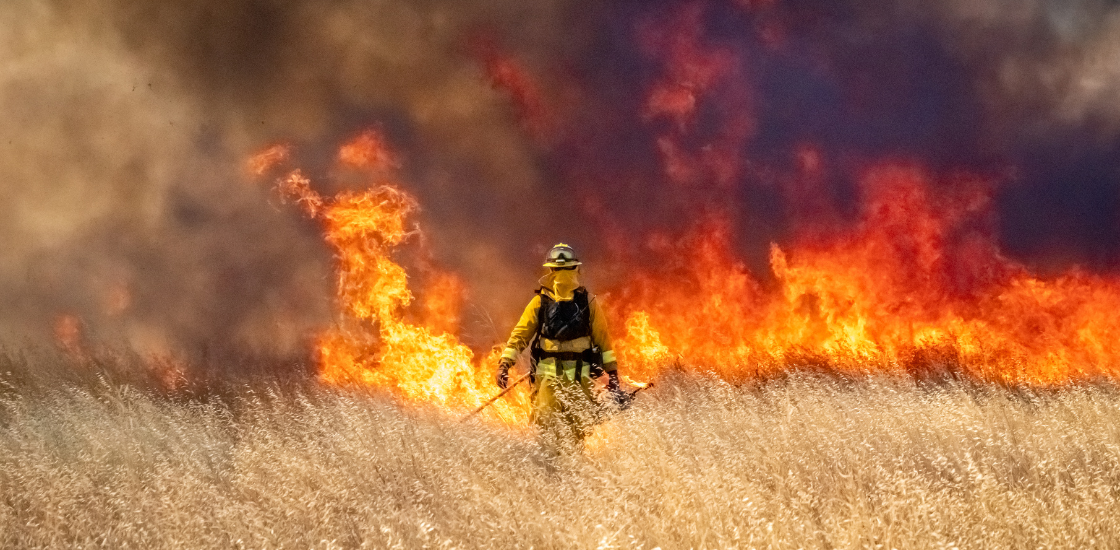Table of Contents
What is a 911 CAD System?
A 911 CAD system is a specialized software used by public safety and emergency agencies to manage emergency calls and coordinate response efforts. When a citizen dials 911, the call is routed to a public safety answering point (PSAP), where a dispatcher uses the system to log call details, determine the nature of the emergency, and dispatch the nearest and most appropriate emergency services.
For a detailed deep dive into CAD systems, visit our blog dedicated to Computer-Aided Dispatch.
What is the difference between RMS and CAD?
Records management systems (RMS) and computer aided dispatch (CAD) systems are both critical tools in public safety operations, but they serve different purposes.
RMS (Records Management System) is designed for the collection, storage, and management of data related to law enforcement activities. This includes incident and communication reports, evidence tracking, and case management. It focuses on the long-term retention and organization of data for reporting, investigations, and legal compliance.
CAD (Computer-Aided Dispatch) systems are used for real-time incident management and resource coordination. They help 911 dispatchers handle emergency calls, log incidents, and dispatch appropriate emergency units (police, fire, EMS). CAD systems emphasize operational efficiency during live emergency situations. RMS (Records Management System) features are commonly integrated into many CAD systems, though they can also exist as standalone systems.
In summary, CAD focuses on real-time emergency response management, while RMS handles incident data storage and long-term case management.
What public safety organizations use CAD software?
Computer-Aided Dispatch (CAD) systems are essential tools for institutions that need to coordinate rapid, efficient responses. Thus, CAD software is widely used across both public and private sectors, particularly by organizations involved in emergency response and public safety. Common examples of organizations that rely on CAD systems include:
- Public Safety Answering Points (PSAPs) – These are the primary 911 call centers responsible for receiving emergency calls and dispatching appropriate resources.
- 911 Public Safety Services: police departments, fire departments, emergency medical services (EMS)
- Campus and Corporate Security – Some large institutions and corporations with private security teams use CAD systems for internal emergency response management.
- Emergency Management Agencies – These agencies use CAD systems for large-scale incident management, disaster coordination, and resource allocation.
- Emergency Operations Centers (EOCs): Central hubs managing multi-agency coordination during large-scale incidents, such as natural disasters or mass casualty events.
- Utility and Infrastructure Providers: Companies managing critical infrastructure, like power grids or rail systems, may use CAD systems for incident management and public safety coordination.
- Private Security Firms: Some large private firms provide emergency response services and leverage CAD technology for dispatch operations.
- Search and Rescue (SAR) Organizations: Coordinate complex rescue missions in urban or remote areas.
10 essential CAD system features for 911 public safety agencies
Here are the most important CAD software features that help public safety professionals to protect their communities.
1. Call Handling and Management
In the high-pressure environment of a 911 call center, speed and accuracy are everything. Modern CAD systems such as Smart CAD by GINA streamline call handling by providing features such as automatic number identification (ANI) and automatic location identification (ALI), instantly pinpointing the caller’s location. Call logs, real-time status updates, and integrated call recording ensure that every interaction is documented and easily accessible for responders and post-incident analysis.
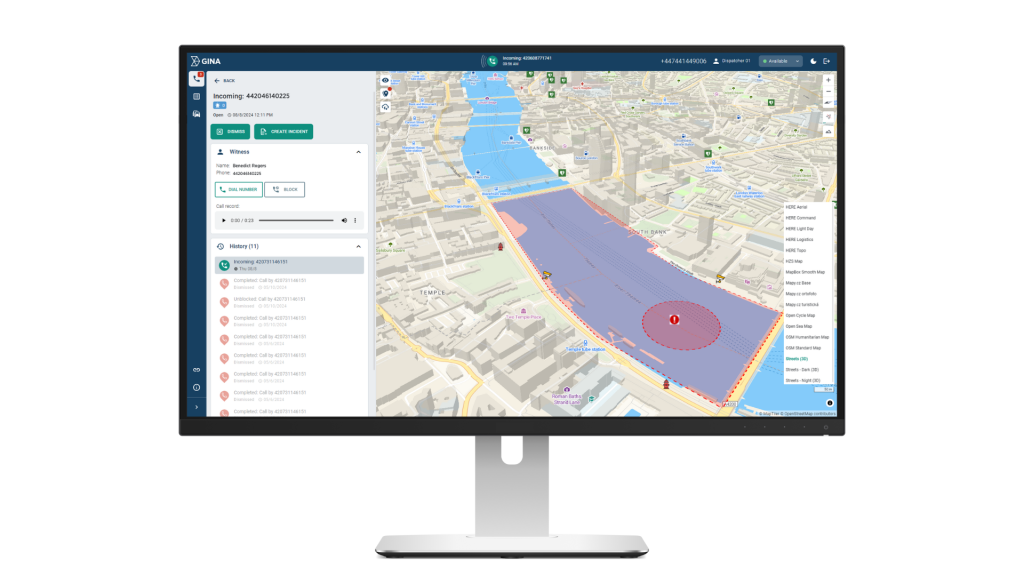
2. Dispatch Management
Assistance in deploying the right response units with minimal delay is one of the top benefits every CAD system should deliver. Modern CAD platforms such as GINA’s Smart CAD allows manual or automated deployment of first responders based on unit availability, proximity, and operational needs. Real-time tracking of unit status, enabled by radios, trackers, and or specialized apps, ensures operators maintain full visibility over every incident.
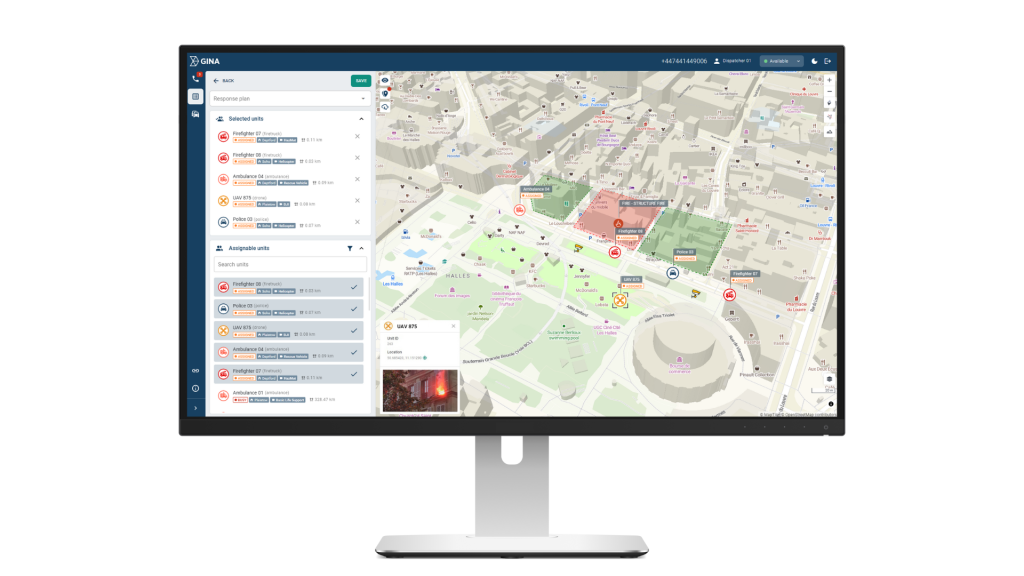
3. Incident management
Managing multiple emergencies requires a structured system for tracking and prioritizing incidents. CAD systems allow for dynamic incident creation, categorization, and live updates. Real-time incident monitoring helps 911 professionals keep situations under control, while incident history and data archiving support investigative follow-ups and compliance reporting.
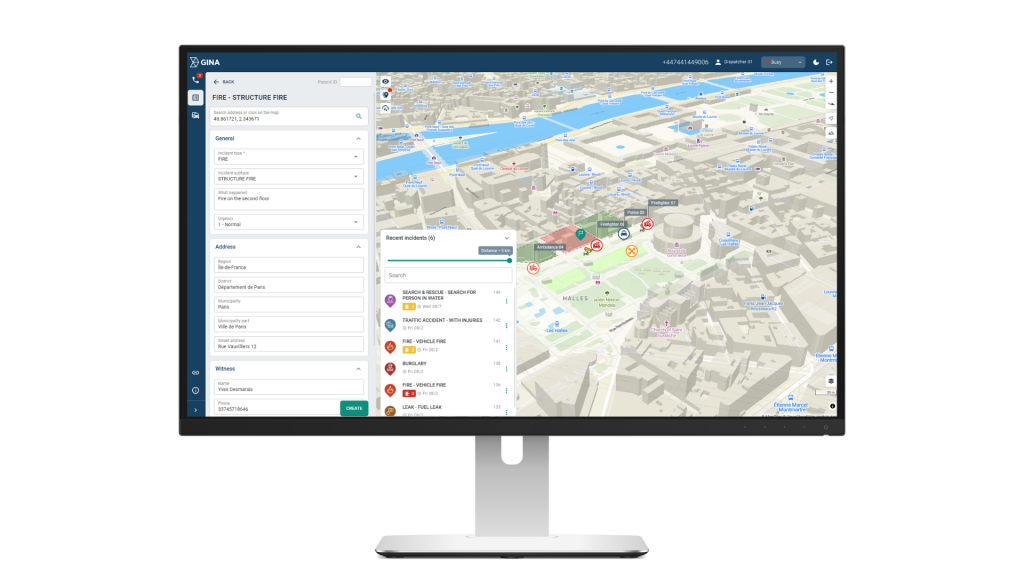
5. Geographic Information System (GIS) mapping
Effective navigation is essential for rapid emergency response. This is why every modern CAD software integrates with GIS mapping. This allows dispatchers and field units to visualize incident locations, assess hazard zones, determine the fastest routes, etc. Address validation and geofencing further enhance situational awareness, critical for both urban and rural public safety agencies.
6. Various communications channels support
Real-time communication between dispatchers, first responders, and command centers is essential for coordinated emergency response. CAD systems support multi-channel communication, including integrated radio, phone, and messaging systems. Text-to-911 capabilities and multimedia messaging allow call takers to receive images and videos directly from callers, enhancing situational assessment.
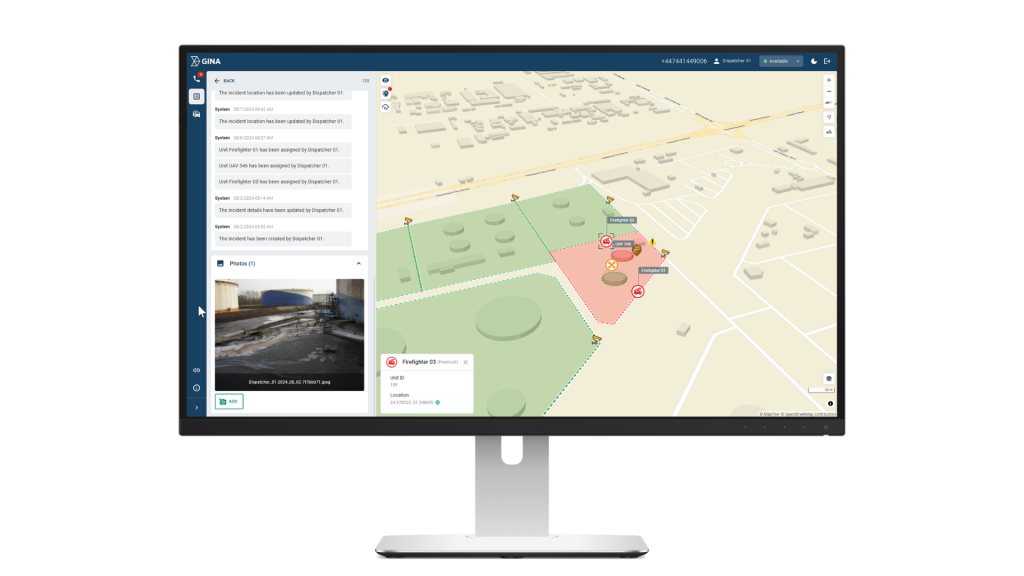
7. Mobile Support and Field Access
Empowering first responders with critical information while in the field improves decision-making and response efficiency. CAD systems with Mobile Data Terminal (MDT) integration allow field units to access incident data, maps, and unit updates directly from their vehicles. Real-time syncing ensures responders stay informed even as situations evolve.
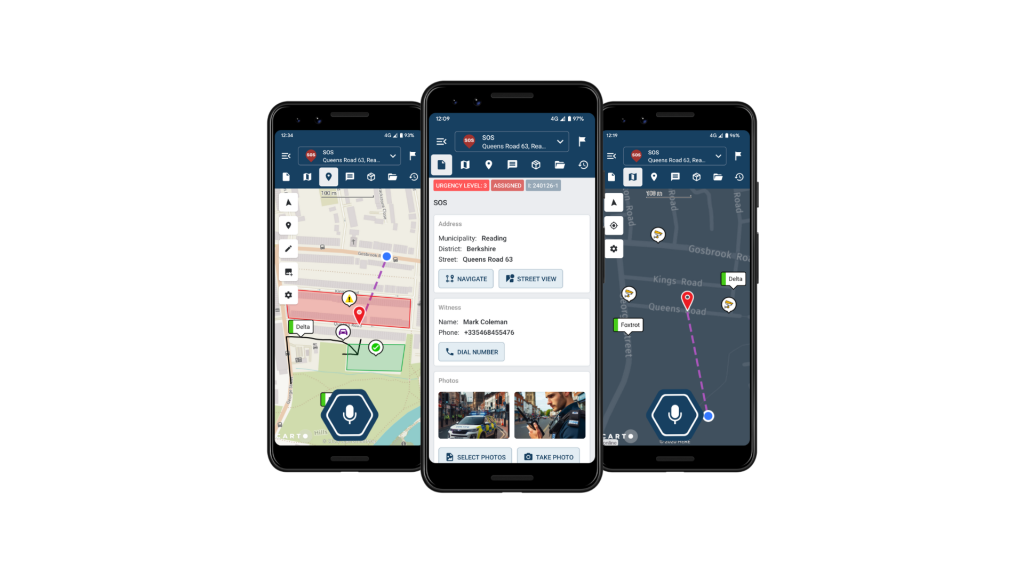
8. Reporting and Data Analytics
Data plays a key role in continuous improvement for public safety agencies. CAD systems offer comprehensive reporting tools for tracking response times, unit performance, and resource utilization. Thus, CAD system should deliver or integrate with the records management system for compliance reasons and post-incident analysis, while supporting data-driven decision-making for enhanced public safety.
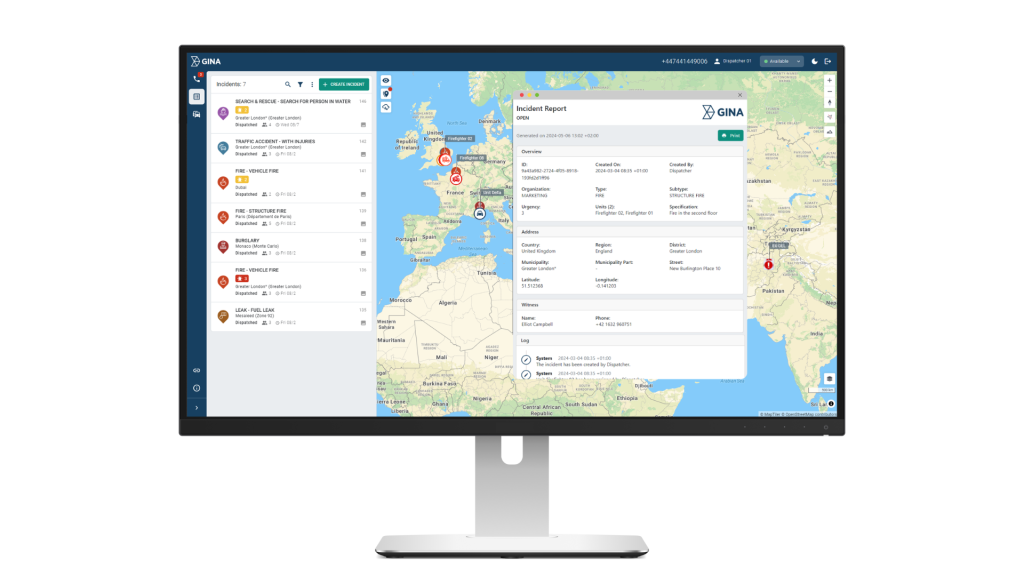
9. Interoperability and Multi-Agency Coordination
Many emergencies require a joint response from multiple agencies. CAD systems with interoperability features enable seamless data sharing between police, fire, EMS, and other public safety organizations. CAD-to-CAD connectivity ensures a coordinated, unified response during large-scale incidents and regional crises.
10. Security and Compliance
Public safety data requires the highest levels of security. CAD systems designed for public safety agencies prioritize CJIS (Criminal Justice Information Services) compliance, secure data encryption, and role-based access controls. This ensures sensitive information remains protected while allowing authorized personnel to access the data they need.
What software do 911 dispatchers use?
The CAD market is operated by various vendors, with some focusing exclusively on CAD software and others providing a wider scope of solutions for public safety. Some trusted vendors include
- CentralSquare – CentralSquare CAD
- GINA Software – Smart CAD
- Hexagon AB – HxGN OnCall
- Motorola – PremierOne CAD
- Tyler Technologies – Enterprise CAD
- Zetron – Max CAD
What makes each vendor stand out is how well they offer easy-to-use software, support for different languages, mobile apps, integration options, and pricing. If you want to learn more about the computer-aided dispatch vendors, check out our article on CAD software market.
911 CAD software trends for 2025
Computer-Aided Dispatch (CAD) systems are continually evolving to enhance emergency response efficiency and effectiveness. Key trends shaping 911 CAD features include:
- Mobile CAD applications – The growth of mobile applications gives first responders instant access to important information, allowing real-time communication and coordination during emergencies. This mobility improves situational awareness and decision-making on the ground.
- Enhanced Interoperability: Developing standards and middleware solutions aim to improve data exchange between disparate CAD systems, enhance natural language processing, data analysis and prediction, etc.
- Integration of Artificial Intelligence (AI) and Machine Learning (ML): Incorporating AI and ML into CAD systems supports dispatchers with advanced resource allocation, incident data-based decision, patterns detection and prediction, thereby improving response times and outcomes.
- Real-time data analytics: Advanced analytics capabilities allow CAD systems to process and analyze data in real-time, providing actionable insights that support decision-making and resource management during emergencies.
- Deeper Geographic Information System (GIS) integration: CAD systems integrate GIS as a core feature. However, the sophistication of GIS integration can vary, and some systems may use more advanced spatial analysis, real-time data layers, or predictive analytics.
Conclusion
A robust CAD system is a critical lifeline for 911 public safety agencies. By equipping call centers and dispatch units with features tailored for emergency operations, these systems help save lives, improve response efficiency, and support the dedicated professionals who keep communities safe. If you are interested in state-of-the-art 911 CAD software, check out the interactive Smart CAD demo or contact us to discuss your needs in person.
